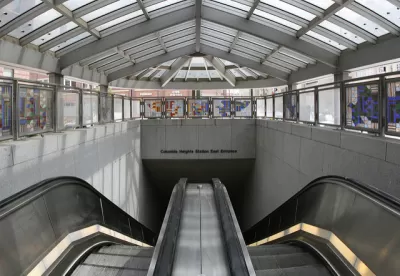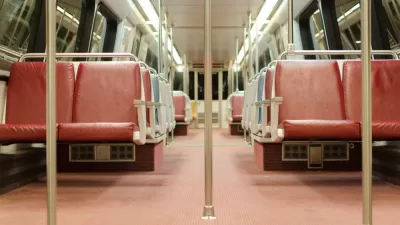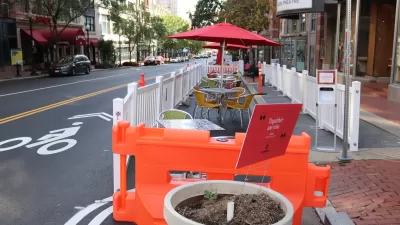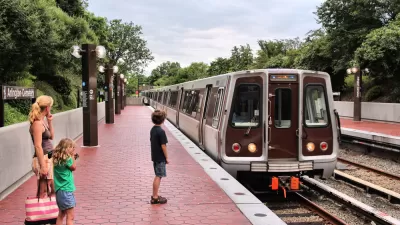The neighborhoods served by Washington D.C.'s Yellow Line have grown and it's time for the train to catch up.

Washington, DC's Mid-City neighborhoods are causing problems for the city's Metro train system. During rush hour, northbound Yellow Line trains need to pull backwards along track they have already covered to accommodate Green Line trains. According to Greater Greater Washington's Alex Cox, this problem was caused by "Massive redevelopment in Mid-City that began around the turn of the century, and has continued at a frantic pace to the present day. That has meant increased demand for service along the Green/Yellow Lines at all hours."
Unfortunately, when these trains were originally designed, they were not intended to run simultaneously at all hours of the day. They share some track and, as Cox points out, adding more track is not necessarily a simple solution because of the specific features along this stretch of track including turns and tunnels that would constrict new construction. It’s likely it would be costly to construct any additional pocket track to allow the trains to run simultaneously.

Manufactured Crisis: Losing the Nation’s Largest Source of Unsubsidized Affordable Housing
Manufactured housing communities have long been an affordable housing option for millions of people living in the U.S., but that affordability is disappearing rapidly. How did we get here?

Americans May Be Stuck — But Why?
Americans are moving a lot less than they once did, and that is a problem. While Yoni Applebaum, in his highly-publicized article Stuck, gets the reasons badly wrong, it's still important to ask: why are we moving so much less than before?

Using Old Oil and Gas Wells for Green Energy Storage
Penn State researchers have found that repurposing abandoned oil and gas wells for geothermal-assisted compressed-air energy storage can boost efficiency, reduce environmental risks, and support clean energy and job transitions.

Updating LA’s Tree Rules Could Bring More Shade to Underserved Neighborhoods
A new USC study finds that relaxing Los Angeles’ outdated tree planting guidelines could significantly expand urban tree canopy and reduce shade disparities in lower-income neighborhoods, though infrastructure investments are also needed.

California's Canal Solar Projects Aim to Conserve Resources and Expand Clean Energy
California’s Project Nexus has begun generating electricity from solar panels installed over irrigation canals, with researchers and state agencies exploring statewide expansion to conserve water and boost clean energy production.

HHS Staff Cuts Gut Energy Assistance Program
The full staff of a federal program that distributes heating and cooling assistance for low-income families was laid off, jeopardizing the program’s operations.
Urban Design for Planners 1: Software Tools
This six-course series explores essential urban design concepts using open source software and equips planners with the tools they need to participate fully in the urban design process.
Planning for Universal Design
Learn the tools for implementing Universal Design in planning regulations.
Heyer Gruel & Associates PA
City of Moreno Valley
Institute for Housing and Urban Development Studies (IHS)
City of Grandview
Harvard GSD Executive Education
Salt Lake City
NYU Wagner Graduate School of Public Service
City of Cambridge, Maryland





























